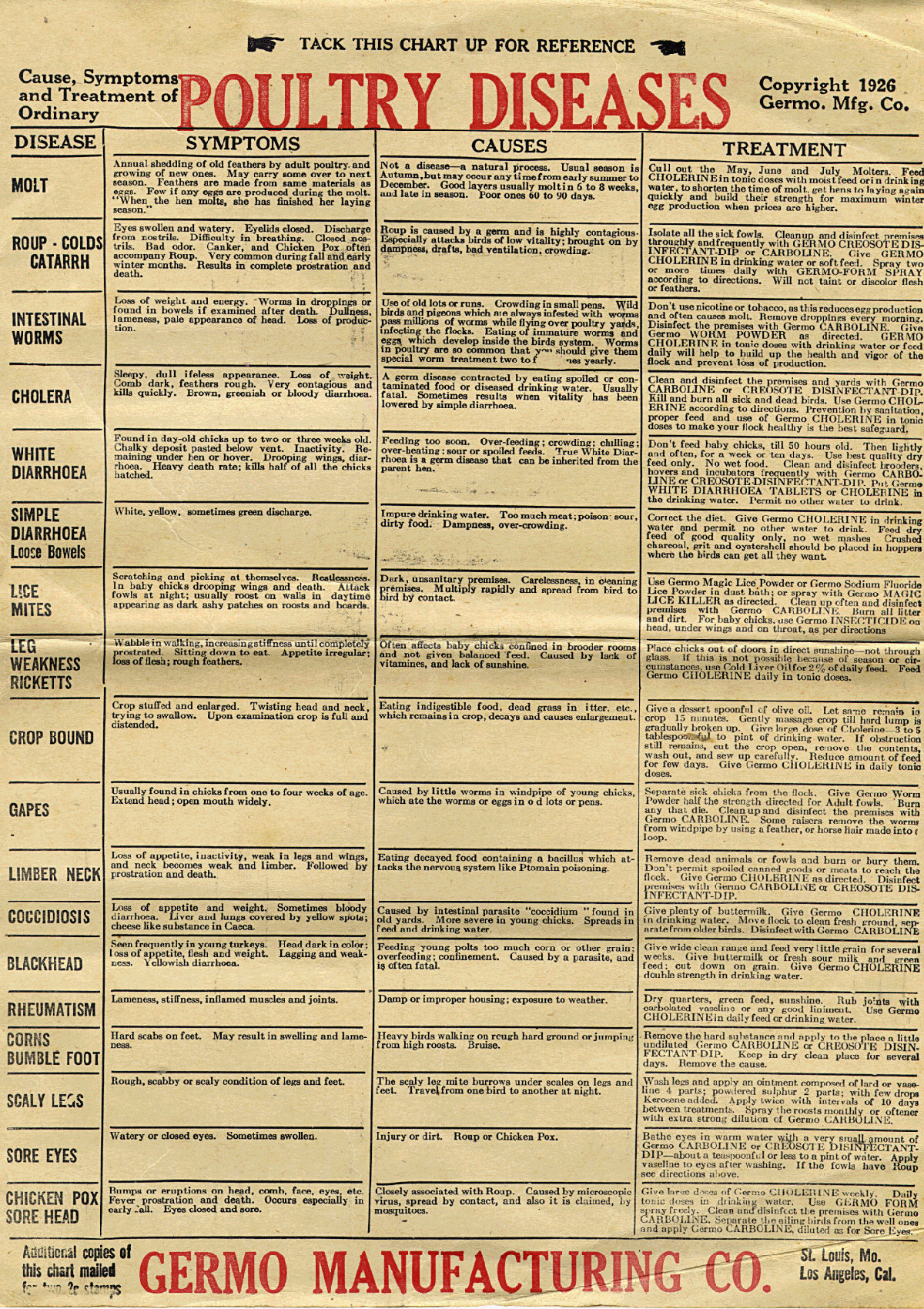Animal Diseases in Illinois
Early Twentieth Century
The examples below teach us that science had not progressed to such a state that farmers could prevent many animal diseases, or treat them effectively. Advances would be made in the twentieth century that helped farmers protect their animals.
Commercial Treatment for Animal Diseases

This advertising poster lauds the efficacy of Germo products for preventing or curing diseases in chickens. It seems amusing now, but it showed the early twentieth-century attempts at chemistry to help agriculture.
This synopsis of a Report of the Bureau of Animal Husbandry, 1885 explains several outbreaks of disease that were plaguing agriculture in that year.
Pleuro-pneumonia in Cattle
The report describes actions taken by federal, state, and local governments to control and eradicate a plaque of contagious pleuro-pneumonia or lung plague in cattle in the western states. Kentucky, Texas, and Missouri were particularly hard-hit. The only remedy for this disease was the identification and eradication of sick animals, and isolation of other animals with which they had been in contact. It was necessary to track down the source of the disease by following sales of animals back to previous owners. Results showed that in Missouri the sick animals had come from a county asylum farm.
Illinois was fortunate that only one farm in Geneva (March, 1885) and one farm near Peoria (April, 1885) were found to have infected cows. They and the farmers' other cattle were slaughtered, and an 18-month quarantine on cattle sales by these farmers was put in place. It was advised that contaminated pens not be used for a year to avoid recontamination.
It was left to local cattle associations and their pressure on state governments to work with the Commission on Agriculture to coordinate efforts in eradication. State laws were not in existence for a coordinated nationwide effort.
Swine Plague
This report discusses laboratory experiments with Louis Pasteur's vaccine for Rouget, a disease of swine in France, in an effort to mediate Swine Plague in the United States. Researchers first gave varying amounts of the vaccine to mice and swine then exposed them to pigs infected with swine plague. The vaccinated animals all died. It was found that the bacillus for rouget was different from that of swine plague. The conclusion was that the vaccine was not only ineffective, but could possibly cause the spread of a new disease not seen in the United States before.







